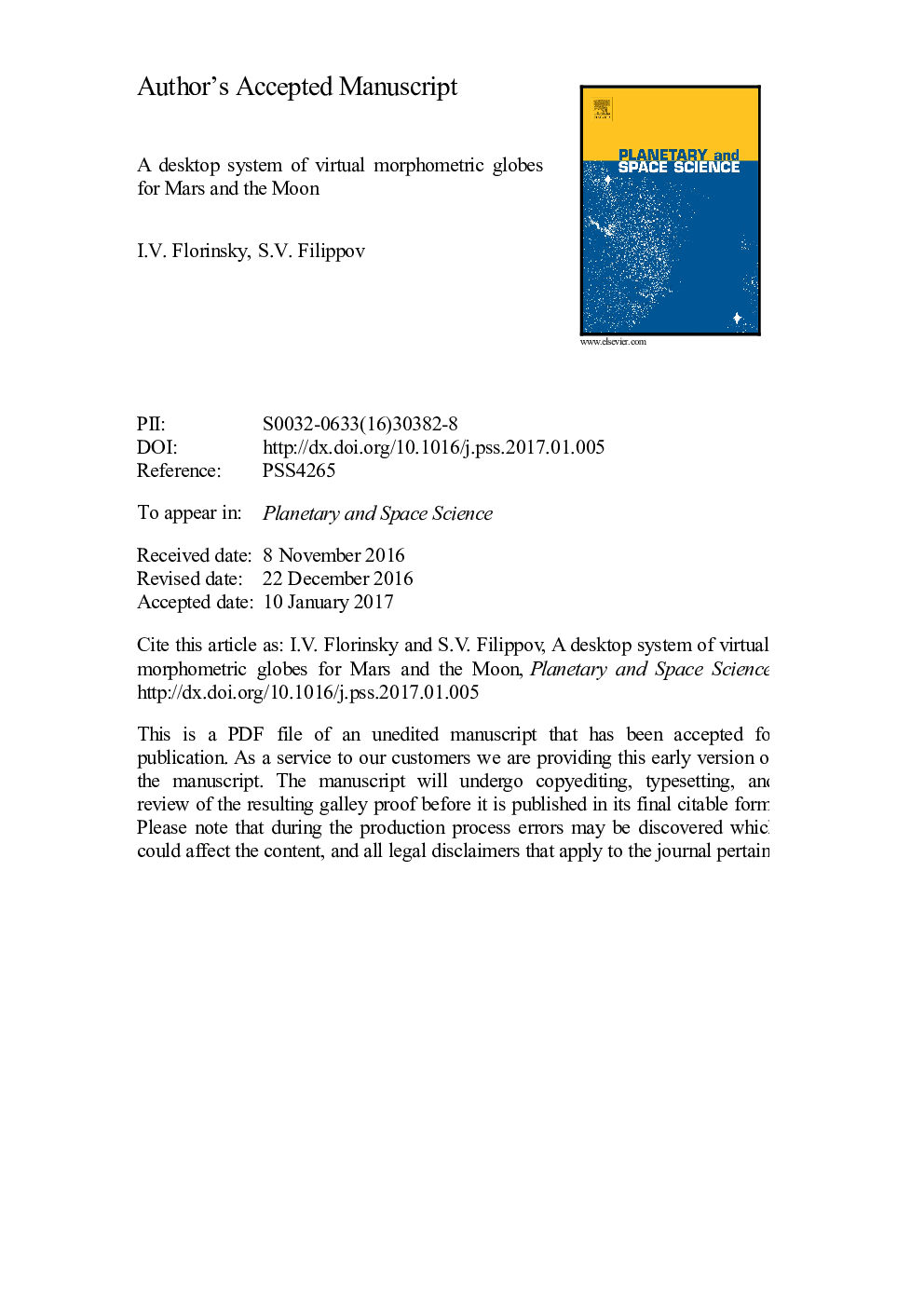| Article ID | Journal | Published Year | Pages | File Type |
|---|---|---|---|---|
| 5488038 | Planetary and Space Science | 2017 | 25 Pages |
Abstract
Global morphometric models can be useful for earth and planetary studies. Virtual globes - programs implementing interactive three-dimensional (3D) models of planets - are increasingly used in geo- and planetary sciences. We describe the development of a desktop system of virtual morphometric globes for Mars and the Moon. As the initial data, we used 15'-gridded global digital elevation models (DEMs) extracted from the Mars Orbiter Laser Altimeter (MOLA) and the Lunar Orbiter Laser Altimeter (LOLA) gridded archives. For two celestial bodies, we derived global digital models of several morphometric attributes, such as horizontal curvature, vertical curvature, minimal curvature, maximal curvature, and catchment area. To develop the system, we used Blender, the free open-source software for 3D modeling and visualization. First, a 3D sphere model was generated. Second, the global morphometric maps were imposed to the sphere surface as textures. Finally, the real-time 3D graphics Blender engine was used to implement rotation and zooming of the globes. The testing of the developed system demonstrated its good performance. Morphometric globes clearly represent peculiarities of planetary topography, according to the physical and mathematical sense of a particular morphometric variable.
Related Topics
Physical Sciences and Engineering
Earth and Planetary Sciences
Geophysics
Authors
I.V. Florinsky, S.V. Filippov,
